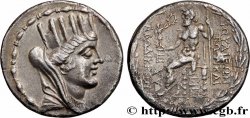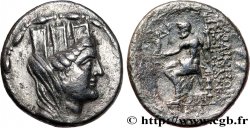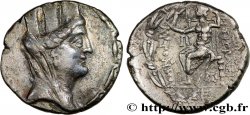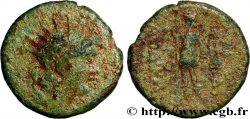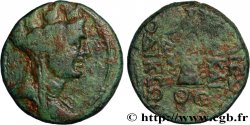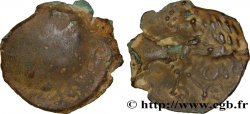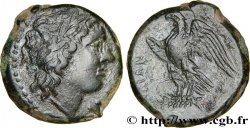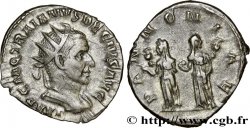Live auction - bgr_267435 - SYRIA - SELEUCIA AND PIERIA - LAODICEA Tétradrachme stéphanophore
You must signin and be an approved bidder to bid, LOGIN TO BID. Accounts are subject to approval and the approval process takes place within 48 hours. Do not wait until the day a sale closes to register. Clicking on "BID" constitutes acceptance of the terms of use of cgb.fr private live auctions.
Bids must be placed in whole Euro amounts only. The sale will start closing at the time stated on the item description; any bids received at the site after the closing time will not be executed. Transmission times may vary and bids could be rejected if you wait until the last second. For further information check the Live auction FAQ
All winning bids are subject to a 18% buyer’s fee.
All winning bids are subject to a 18% buyer’s fee.
| Estimate : | 950 € |
| Price : | 741 € |
| Maximum bid : | 806 € |
| End of the sale : | 19 April 2016 14:19:55 |
| bidders : | 2 bidders |
Type : Tétradrachme stéphanophore
Date: An 19
Mint name / Town : Laodicée, Syrie
Metal : silver
Diameter : 25,50 mm
Orientation dies : 12 h.
Weight : 14,81 g.
Rarity : R3
Coments on the condition:
Exemplaire sur un petit flan bien centré des deux côtés un peu court sur les couronnes. Très beau portrait, bien venu à la frappe, de haut relief. Joli revers avec un Zeus équilibré de haut relief, de style fin, bien venu à la frappe. Très belle patine de collection ancienne avec des reflets mordorés. Patine légèrement granuleuse
Catalogue references :
Predigree :
Cet exemplaire provient du stock de Roland Barthold, août 1985 et de MONNAIES 51, n° 249
Obverse
Obverse legend : ANÉPIGRAPHE.
Obverse description : Buste de Tyché à droite, tourelé, voilé et drapé, entouré de la stemma.
Reverse
Reverse description : Zeus nicéphore trônant à gauche, tenant une Niké de la main droite et un sceptre long de la gauche ; le tout dans une couronne de laurier.
Reverse legend : LAODIKEWN/ THS IERAS KAI/ AUTONOMOU/ QI/HI/ (PAU)/ KA
Reverse translation : (de Laodicée, la sainte et autonome).
Commentary
Même coin de droit que l’exemplaire du Cabinet des médailles de Bruxelles (collection de Hirsch 1730) pour l’an 18 (64-63 avant J.-C.) (Morkholm, 11a, pl. 15/16) avec un début de cassure de coin perceptible dans la couronne murale de Tyché au droit et une marque bien particulière sur la joue. Le coin de droit se détériore progressivement par réemploi successif plusieurs années de suite. Cette date était inédite et manquait à l’article de Morkholm. De plus l’an 19 est regravé avec le thêta refait sur l’heta (9 sur 8). Nous avons un exemplaire de l’an 17, 18 et 20 de même coin de droit que notre exemplaire (Morkholm 10a, 11a et 12, pl. 15, n° 15, 16 et 17). Ce type est maintenant signalé dans l’ouvrage de Hoover.
Same obverse die as the example from the Cabinet of Medals of Brussels (Hirsch collection 1730) for the year 18 (64-63 BC) (Morkholm, 11a, pl. 15/16) with the beginning of a die break visible in the mural crown of Tyche on the obverse and a very particular mark on the cheek. The obverse die gradually deteriorates through successive reuse over several years. This date was unpublished and was missing from the Morkholm article. In addition, the year 19 is re-engraved with the theta redone on the heta (9 out of 8). We have a example from the year 17, 18 and 20 with the same obverse die as our example (Morkholm 10a, 11a and 12, pl. 15, nos. 15, 16 and 17). This type is now noted in Hoover's work
Same obverse die as the example from the Cabinet of Medals of Brussels (Hirsch collection 1730) for the year 18 (64-63 BC) (Morkholm, 11a, pl. 15/16) with the beginning of a die break visible in the mural crown of Tyche on the obverse and a very particular mark on the cheek. The obverse die gradually deteriorates through successive reuse over several years. This date was unpublished and was missing from the Morkholm article. In addition, the year 19 is re-engraved with the theta redone on the heta (9 out of 8). We have a example from the year 17, 18 and 20 with the same obverse die as our example (Morkholm 10a, 11a and 12, pl. 15, nos. 15, 16 and 17). This type is now noted in Hoover's work







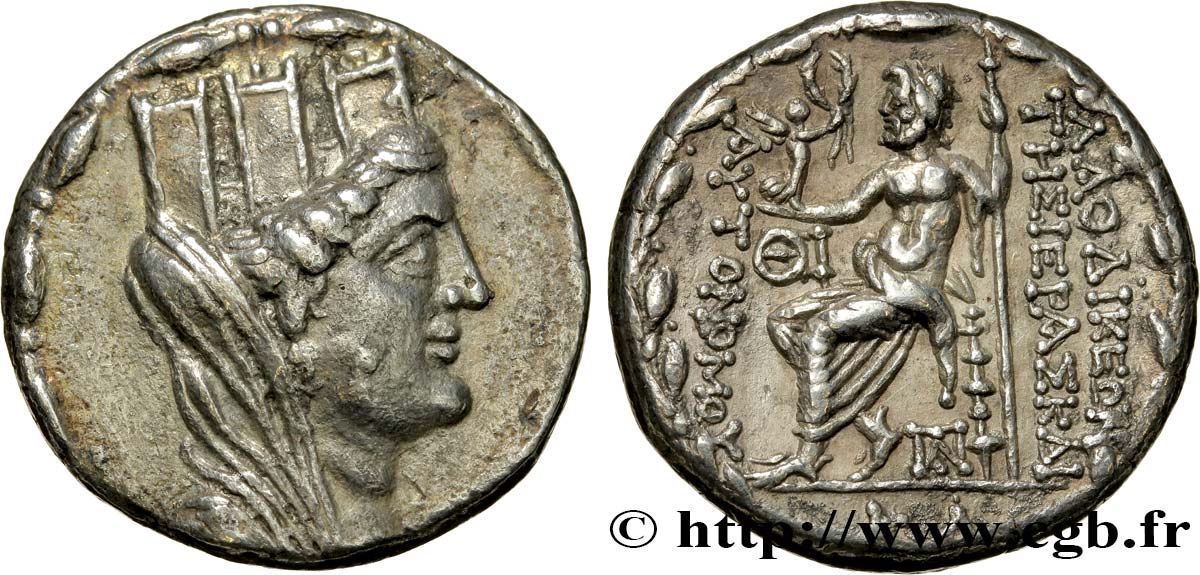
 Report a mistake
Report a mistake Print the page
Print the page Share my selection
Share my selection Ask a question
Ask a question Consign / sell
Consign / sell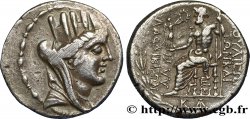
 Full data
Full data